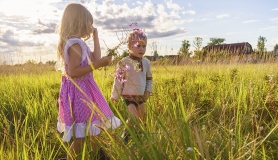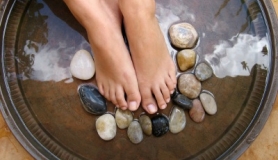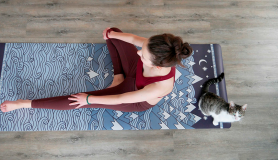Aloe vera is a part of the Lily family (Liliaceae) and probably originated in North Africa, although it will grow anywhere with a suitable subtropical or tropical climate, including on my kitchen window sill. There are around 500 species of Aloe, but it is Aloe vera we are most familiar with for its medicinal uses. Rather confusingly, it has a large number of synonyms. Its most frequently used alternative botanical name is Aloe barbadensis, and this is the version that occurs on much packaging of products in health food shops. Common names include Chinese Aloe, Indian Aloe, Burn Aloe and First Aid Plant. These last two names give a huge clue as to some of Aloe’s special properties.
The use of Aloe has an ancient pedigree which goes back thousands of years. We know that the legendary beauty Cleopatra used the fresh gel from the leaves to keep her skin soft and young. The ancient Egyptians also used the gel to treat burns, a tradition which persists into the modern day and which is why Aloe is found in many of our kitchens. For small, minor burns my first aid routine comprises a couple of minutes under a cold tap, then a slather of Aloe gel – hey presto, no blisters and no scars. Research has also been conducted into its use as an antifungal, an anti-inflammatory, as a treatment for non-insulin dependent diabetes, and for post-operative pain and healing. I used it, mixed with a drop of tea tree oil, for my own post-caesarean wound and experienced very little itching and irritation. Seven weeks on I have a nice clean scar which is fading well.
The well documented benefit to skin health and healing is the reason we look for its inclusion in all those off-the-shelf products. However, most commercially produced goods are unlikely to contain enough Aloe gel for any major effects to be noticed by the consumer. For any product, it’s always worth reading the label. The further down the list of ingredients the Aloe is, the less of it there is. The principles of homeopathy do not apply to barely-there Aloe in a skin cream, so beware of paying a premium for little or no functional benefits.
Aloe is also gaining popularity for having a potential to improve digestive health. It has certainly been used historically to treat parasites and to fight infection, and improvements in sufferers of IBS and chronic fatigue syndrome have been reported. Aloe is known to contain polysaccharides which stimulate growth and repair, a specific polysaccharide which neutralises the enzymes responsible for damaging the mucosal wall, and mucopolysaccharides which have a host of uses including helping our intestinal flora and lining the gut to keep out toxins. It would seem that the benefits of ingesting Aloe could be as great as its use topically on the skin.
However, before you use any natural product it is always worth considering any risks. Aloe contains a chemical called Aloin just under the surface of the leaf. This is a poison which was used previously to induce vomiting and relieve constipation, but which is now banned due to health concerns over its toxicity. The presence of this chemical makes sense for a juicy and tasty-looking plant attempting to avoid being eaten by grazers. Aloin can also cause contact dermatitis, so the safest way to use Aloe is to check a reputable source for how to extract the gel from the leaf without including the nasty bit, or to buy it from a company that has done the work for you.
Aloe gel is available from health food stores and is indispensible in the home. I kept a pot in the fridge to cool my sore boobs as I was establishing breastfeeding. I’ve also found it invaluable for treating my family’s minor skin problems, such as bites and stings, sun exposure, rashes, and even for keeping two little bottoms soft and soothed.
Marianne Hopwood BSc is an Environmental Science teacher and mum to 2 year old Ollie and new baby Toby
References
http://www.iasc.org/articles.html
http://faculty.ucc.edu/biology-ombrello/pow/aloe_vera.htm
http://www.globalherbalsupplies.com/herb_information/aloe_vera.htm
http://blankees.com/house/plants/aloe_b.htm
http://en.wikipedia.org/wiki/Aloe_vera

_878_500_c1.jpg)





